Portugal was a major powerhouse and leader in discovering new lands for centuries during the Age of Discovery. The district of Belem is located about 3.1 miles (5 km) from central Lisbon. It has some wonderful attractions honoring the bygone era when the Portuguese led world exploration. We really liked Belem. One of of its main attractions and one of the country’s gems is San Jeronimos Monastery Mosteiro dos Jerónimos.
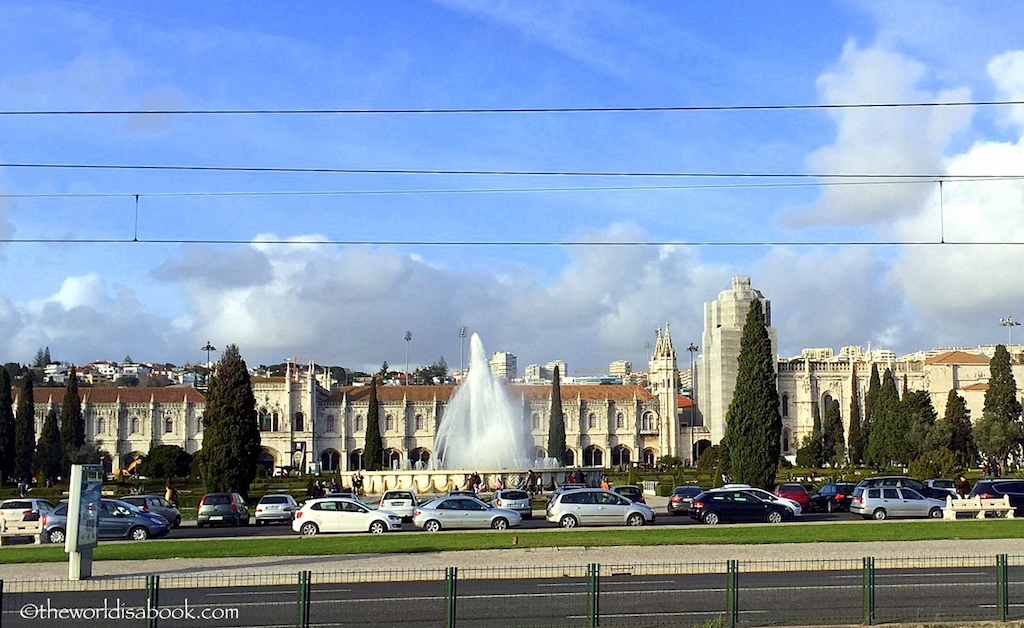
We were here on a weekday in late December and the line to enter or to buy tickets stretched for almost the entire length of the building. We eventually visited later in the day without the crowds.
Even if the crowd looked like a deterrent, the outside was at least worth admiring. The exterior was gleaming under the sun with some very ornate sculptures and carvings.
History of San Jeronimos Monastery
Mosteiro dos Jerónimos was built along the Tagus River and completed around 1600. King Manuel I decided to build a monastery in honor of the Virgin Mary and as gratitude for one of its premiere explorer’s, (Vasco de Gama), successful expedition to India.
Precious commodities from Africa, Asia and South American expeditions plus spice trade taxes mainly subsidized the monastery’s construction. The King asked the Order of St. Jerome or the Hieronymites to occupy this new monastery.
In return, the monks were supposed to perform daily masses and pray for Prince Henry the Navigator and, of course, the king and his successors. The monks were also spiritual counselors to the many navigators sailing from Belem.
The monks were at the monastery for 400 years. The monastery became state property in the 1830s and was used as a college until the 1940s. It is now a museum, a working church and a mausoleum. It was classified as a UNESCO World Heritage Monument in 1983.
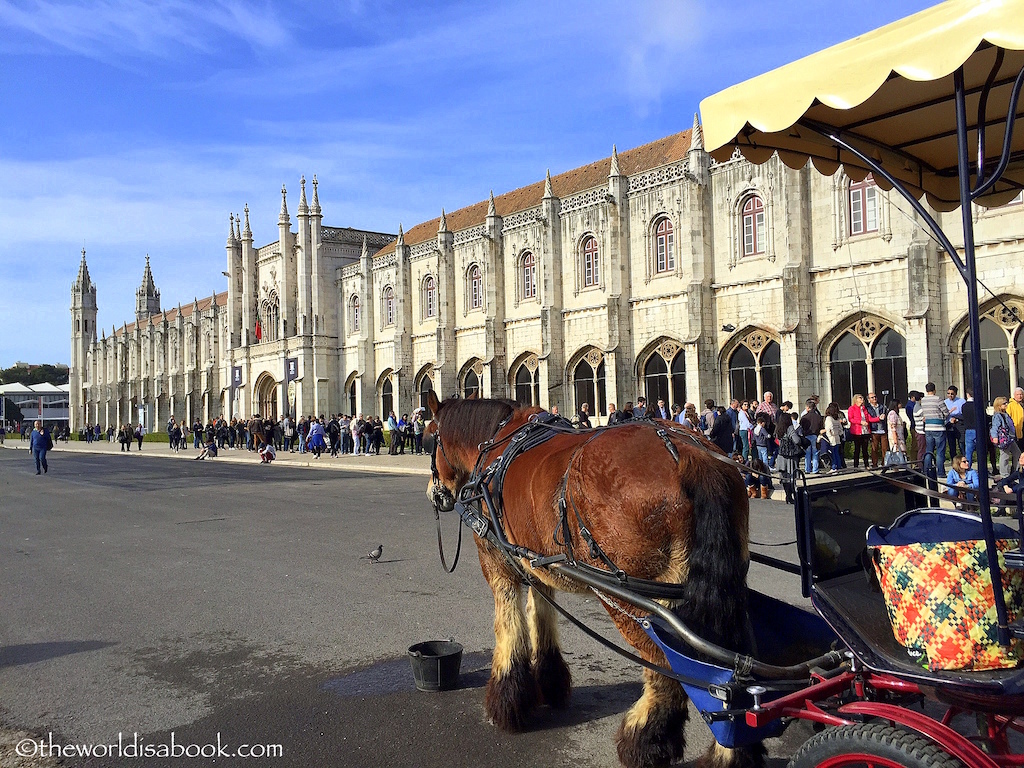
The San Jeronimos Monastery
The monastery is a stunning model of Manueline architectural style. This unique Portuguese design combines Gothic, Moorish and Renaissance styles with nautical themes as a nod to the Age of Discoveries. The craftsmanship and exquisite details up close were amazing.
The Cloisters
The highlights of the monastery were the two levels of cloisters. These covered halls were architectural masterpieces and full of so many sculptural details. No wonder it took almost 100 years to build. The stonework and sculptures have been maintained very well through the ages.
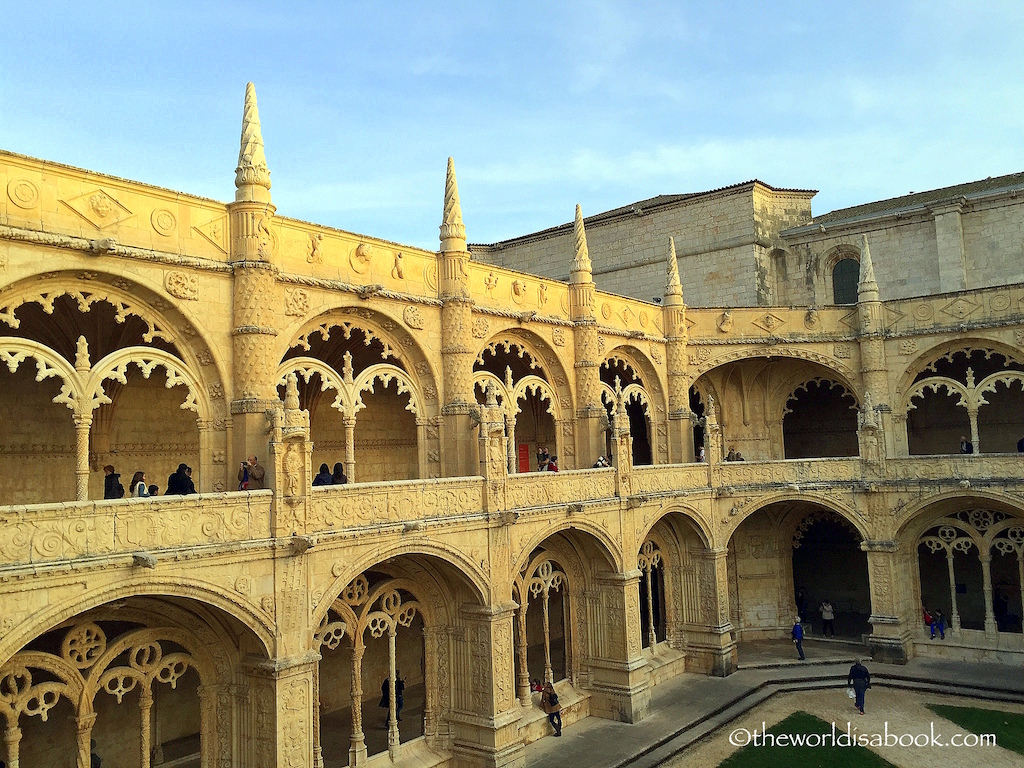
There were no plain columns here. Each column had intricate designs of religious and royal symbols, rope coils, corals, sea creatures, flowers, and mythical creatures.
We probably could have spent the whole afternoon examining every corner. There are plenty of photo opportunities for budding and professional photographers here. We even saw some occasional selfies.
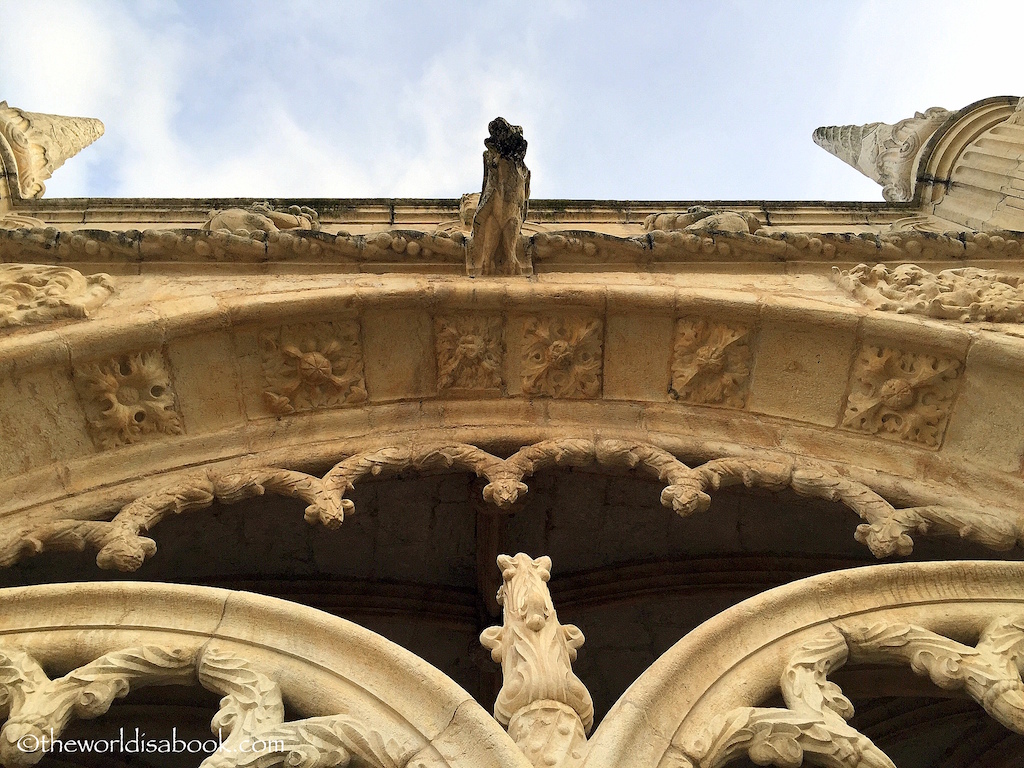
My kids actually enjoyed our visit here considering a church and monastery were not exactly at the top of their places to see. But, they liked the wide-open spaces and many corners to explore.
This was an ideal place to play I Spy with the kids. What sea life or mythical creatures can you spot within the carvings, columns and arches? There were even some gargoyles hanging on top.
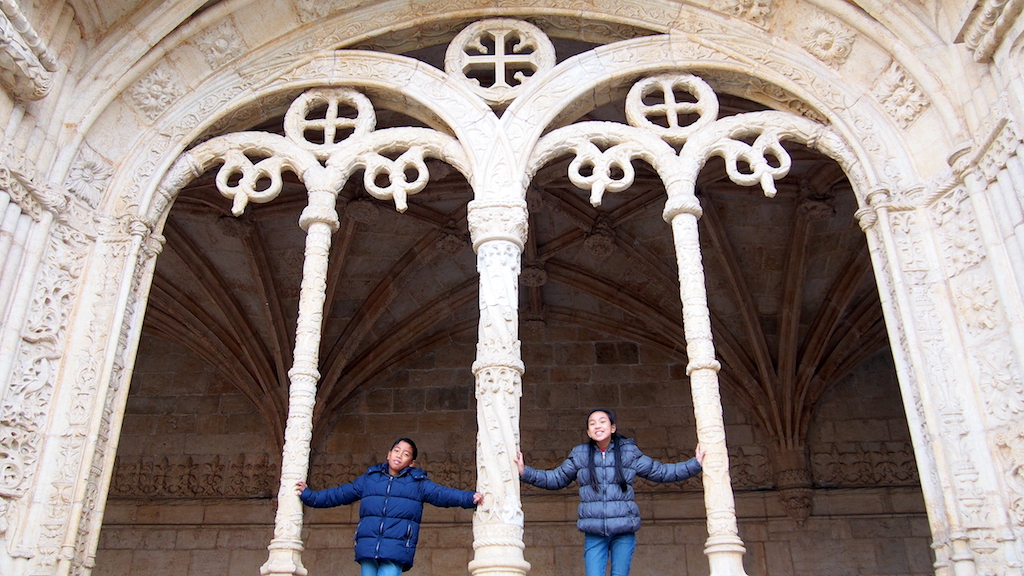
The arches opened into the central courtyard. I was expecting the courtyard to be better maintained with some flowers and a garden surrounding the fountain to match the ornate surroundings. But, it was just a patch of grass. I guess who needs a garden when the cloisters are the main attraction.
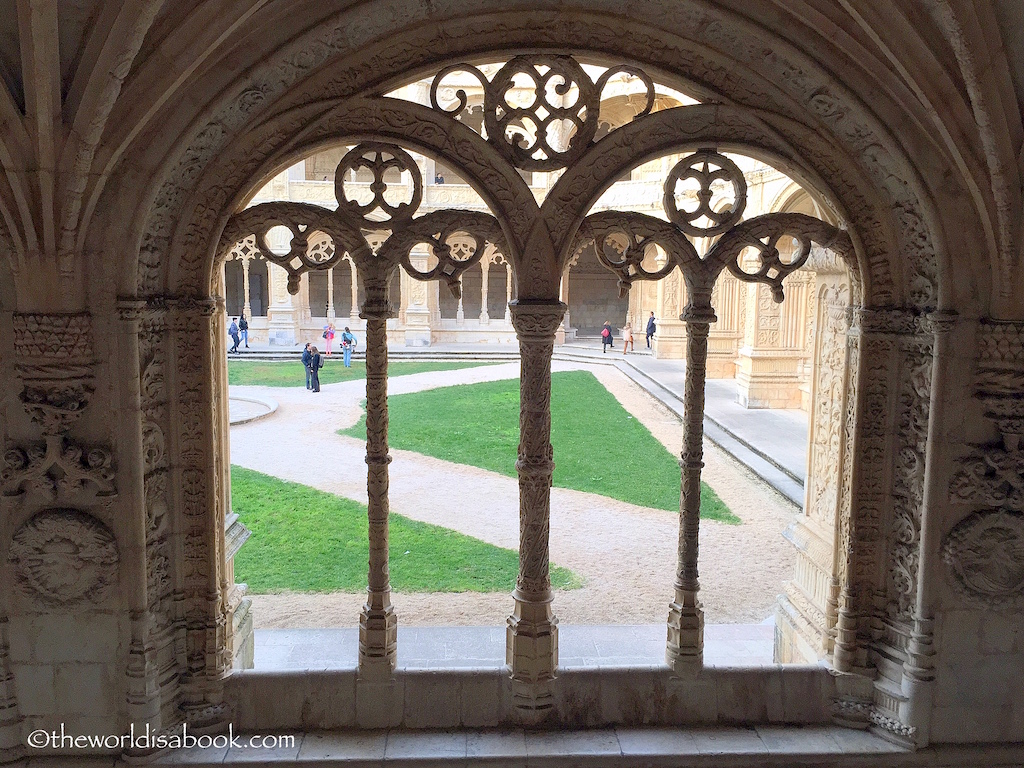
The vaulted ceilings on the lower level were magnificent. Despite the crowds earlier, we were glad we made a decision to come here later in the day near closing time. We had some areas to ourselves and loved the serenity the place offered.
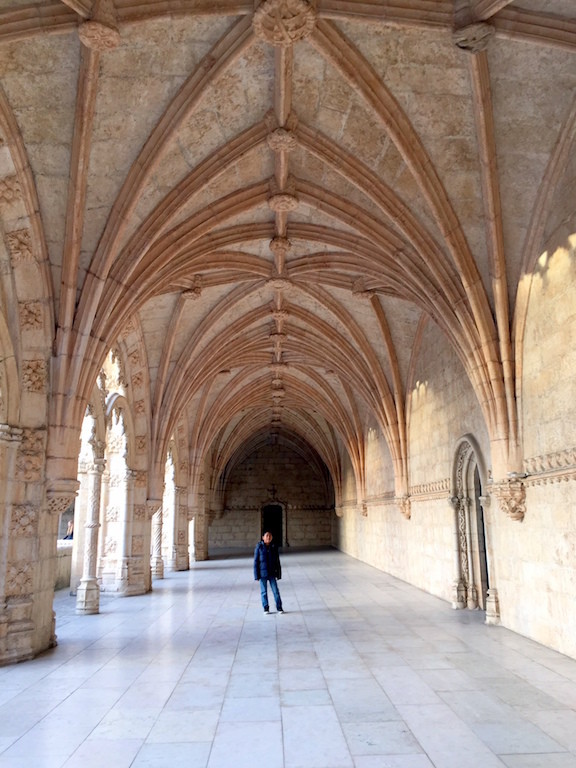
The Rooms
We only found a few rooms open in the monastery. So, it looked smaller than it did from the outside. One was an exhibit on the Portuguese history and the timeline with the rest of the world’s history. Some parts of the monastery had been converted to museums like the Marine and Archaeological Museum.
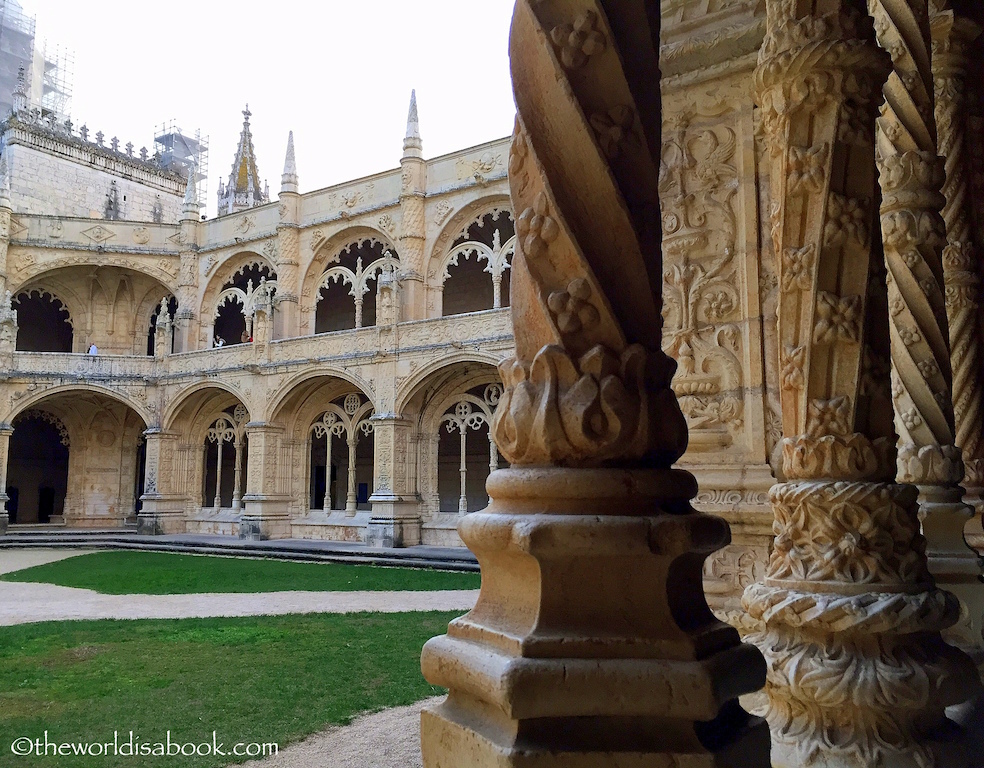
The second floor area also has an entrance into a balcony that looked out into the adjacent church. This was our view of the church from here. We also saw some of the colorful stained glass windows up close.
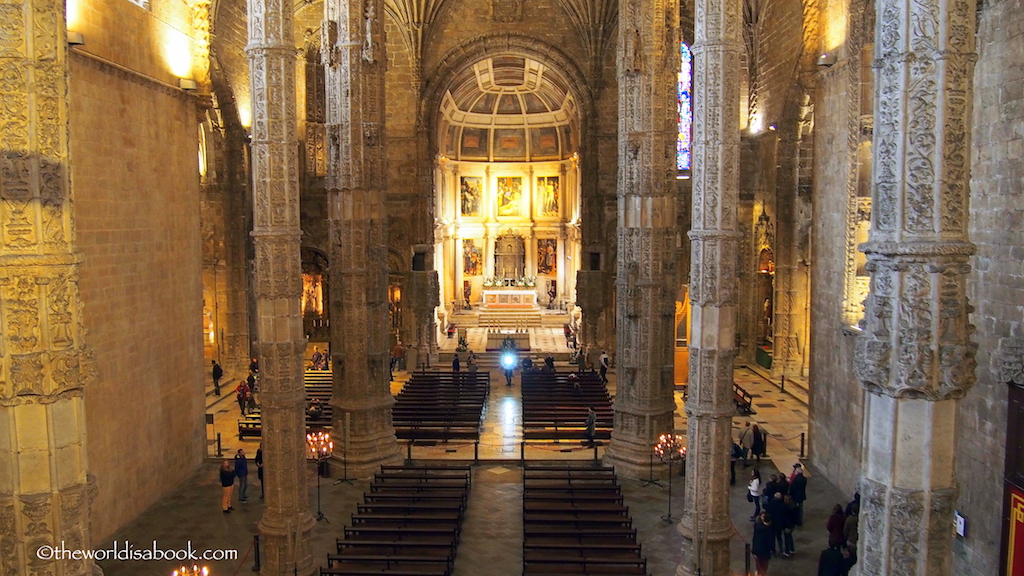
The Church of Santa Maria de Belem
Many rave about the beauty and architecture of the monastery. But, the adjacent Church of Santa Maria de Belem is also stunning and worth a visit. It was impressive with many ornate details both inside and outside. The church is free to visit and doesn’t have the massive line to the entrance.
This was the South Portal on the church’s exterior. There were double doors that led to a side entrance. Carvings and statues of saints, including scenes from St. Jerome’s life, and a central figure of Our Lady of Bethlehem and Child. It was an incredible work of art.
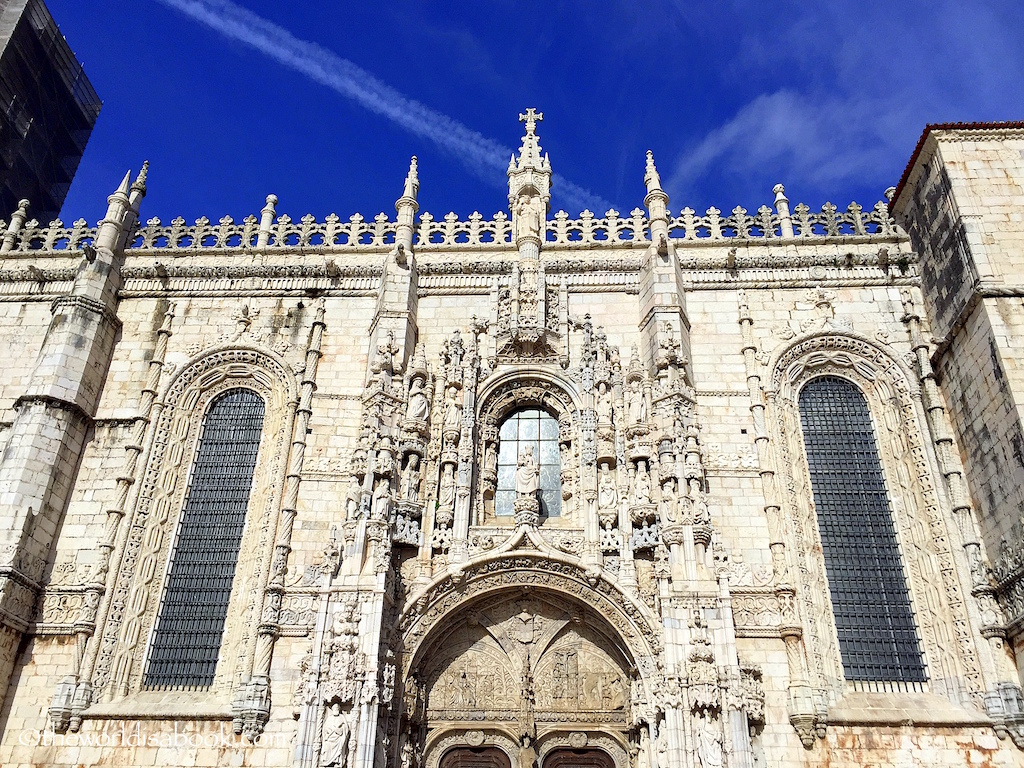
The interior had several massive pillars that almost looked like tropical palm trees. There were colorful stained glass windows and an impressive high altar and a massive vaulted ceiling. Many of the artwork around the church is of St. Jerome since was the patron saint of the Hieronymites who resided at the monastery.
There were also tombs of Portuguese royalty and other notable Portuguese figures inside the church. One of the most visited, which was by the entrance, was the tomb of explorer Vasco de Gama whose expeditions inspired the building of this monastery.
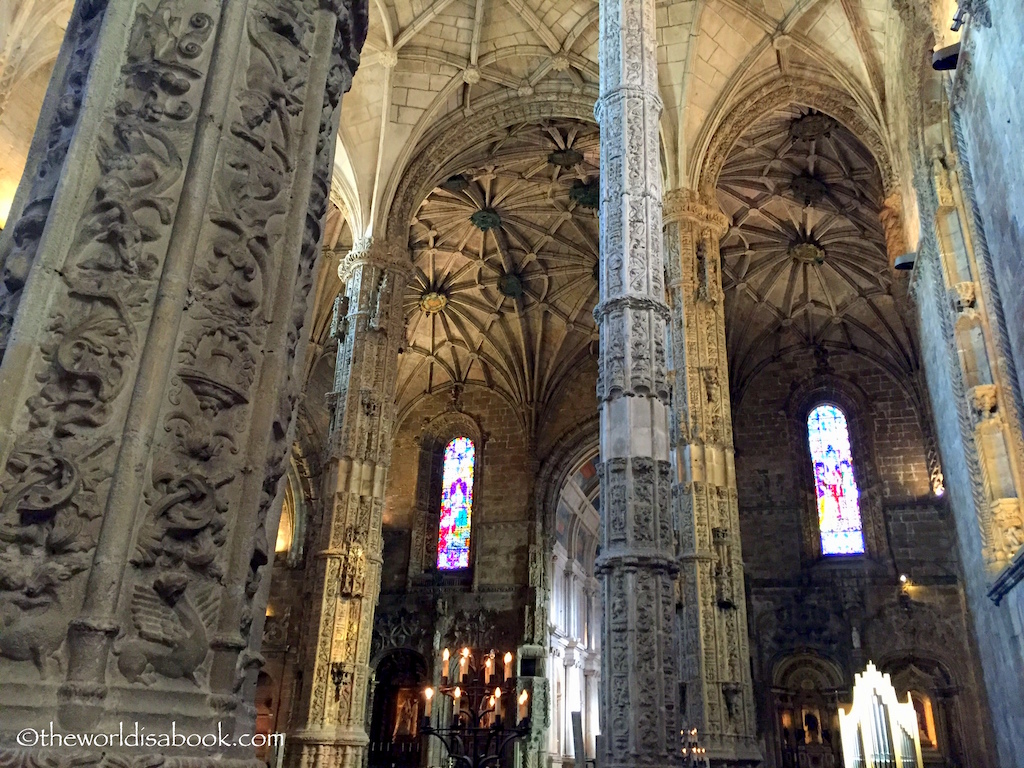
We clearly saw why the San Jeronimos Monastery and the adjoining church were two of Lisbon’s top attractions that shouldn’t be missed. They were magnificent pieces of architecture and truly worthy of its UNESCO World Heritage status.
It was a great representation of Portugal’s art and unique architecture and a lasting symbol of its wealth and power during the Age of Discoveries. It’s not a very big place but a worthy stop while one explores Belem and its many other attractions.

Tips for Visiting San Jeronimos Monastery
- Getting There: Go on Tram 15 from central Lisbon to Belem-Jeronimos stop. Bus Numbers 28, 714, 727, 729 and 751 pass by here. Train stop is Belem Station and was about a 10-minute walk. Be aware that the tram and buses can get really crowded.
- Buy a combination ticket with other attractions (e.g. Belem Tower) for a few extra euros more to get better deal.
- Get Free admission to the monastery and other attractions plus ride Lisbon’s transportation systems for free with the Lisboa Card. This bypasses the ticket purchase line too.
- Visit early or later in the day to avoid the tour groups and crowds.
- Free admission during first Sunday of the month but expect very long queues.
*Have you visited this monastery or the Belem area?
Pin it for later!
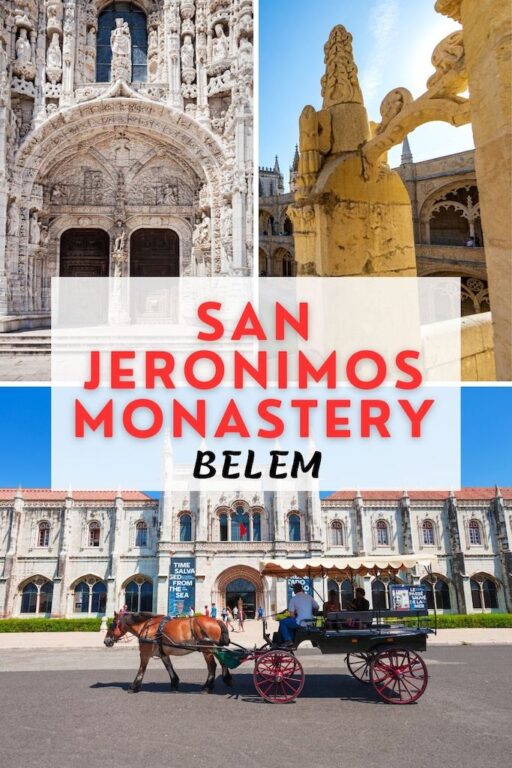
Yes, I have. I was very impressed by it.great photos! #weekend wanderlust
I have only been to one monastery – Mont St. Michel in France. (and the courtyards are similar but Mont St. Michel is much less ornate) Beautiful photos! Looks like a cool place to visit – especially if you can avoid the lines.
Mary those Cloisters are beautiful. I’m not religious but I like visiting religious buildings. I’m really an outdoors kind of person and I think the attraction of cloisters for me are that they look into a courtyard. The decorative touches to these particular cloisters are extra-ordinary to what I’ve seen before. The cloisters in Dubrovnik and other European cities I’ve seen have had a simpler (yet grand) feel to them. We have on occasion visited sites late in the day and have appreciated the lack of crowds. It makes for a quality visit and you can move faster, take photos with ease and I imagine it would be a better experience for the children. What a wonderful place to play I Spy.
The details in this place are stunning. It reminds me a bit of the Silk Exchange in Valencia (this place is way bigger though). They have their fair share of ornamental columns and fairy creatures too. Glad to see you guys weren’t defeated by the crowds. Sometimes is better to leave or come back later (or next day).
I always wanted to visit Portugal, but somehow I never made it there yet. San Jeronimos Monastery looks like something I’d put at the top of my list if I visit Portugal. That church looks so majestic and the Cloisters are so elaborate… beautiful!
Wow! The architecture is phenomenal! Thanks for sharing via The Weekly Postcard!
That is amazing!!!! I love the intricate details of the walls and columns, you can never find something like that anymore. Modern day churches are too plain and too dull.
Mary, I loved San Jeronimos Monastery and the Maritime museum was definitely worth a visit. But, the real “treat” was the Pastel de Belém, those deliciously creamy little pastries from The Fábrica de Pastéis de Belém right around the corner. I hope you had a chance to try them!
I love Belem – one of my favourite parts of Lisbon, which is one of my favourite cities. The detail on the monastery is just astonishing isn’t it, I must have taken a zillion photos. The waterfront is gorgeous too (and always good to get some pasteis de bars there). #theweeklypostcard
The architecture of this monastery is so unique. I like all the aquatic details and the upside down cones because it seems so whimsical. That your kids didn’t mind being there gives me high hopes that my kids would enjoy it, too.
I visited the gorgeous San Jeronimos monastery almost five years ago and I don’t remember any queues, haha. It’s truly wonderful and I’m happy your kids had a good time. I definitely need to go back on my next trip to Lisbon :D
Wow! That monastery looks huge. I’ve heard of Belem (and their delicious pasteles) but I’ve never heard of San Jeronimo. Looks like an amazing place to visit.
Such a beautiful Monastery ! Would love to see your posts in the Practical Mondays Link Up:)
Gorgeous! I love the architecture!
Thanks for sharing these photos via #TheWeeklyPostcard. We had planned to visit this monastery, but got so distracted by the nearby shop selling Pastéis de Belém that we forgot to return afterward. That is probably my greatest regret from our visit to Lisbon.
Portugal has never been at the top of my wish list but your photos are making me want to visit! The architecture of this monastery is incredible – I could spend hours taking photos!
Is the monument to the explorers nearby? I think i recall seeing this when I went in search of the monument. Your blogs are bringing back all my Portugal memories! very nice.
Wow, San Jeronimos Monastery has some amazing architecture. I love this sort of history! :)